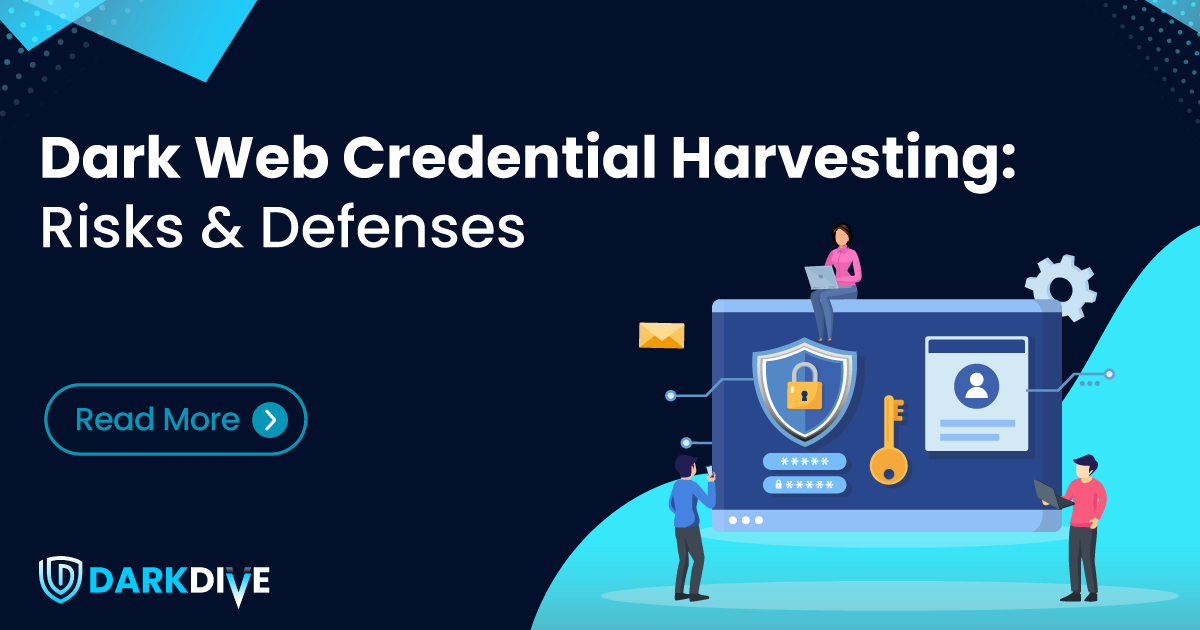
Credentials don’t get hacked; they get harvested. Quietly, persistently, and usually without raising a single alarm.
Credentials are far more than just a username and password. They’re direct access to company infrastructure, cloud platforms, communications, and financial systems. And right now, those credentials are being quietly collected, bundled, and sold across underground marketplaces on the dark web—often without the victims ever realizing it. This isn’t just a hacker’s hobby anymore; it’s a business model.
How Credentials Get Compromised
Credential harvesting isn’t some fringe tactic—it’s an entire ecosystem built on deception, automation, and scale. Most stolen credentials end up in circulation due to one of a handful of now disturbingly common methods. It usually starts with a breach: a compromised platform or service leaks a trove of login details, which are then dumped, sold, and reused elsewhere. Phishing emails, designed to mimic trusted brands or internal comms—trick users into handing over access voluntarily. Malware often plays a role too, with keyloggers recording everything a user types or info-stealers grabbing saved credentials directly from browsers.
Then there’s credential stuffing, where attackers take usernames and passwords from one breach and test them across other platforms, banking on the fact that many people reuse the same login across multiple services. And in more technical attacks like man-in-the-middle interceptions, credentials are stolen during transmission—especially on unsecured public Wi-Fi networks. None of these approaches are particularly new, but what makes them dangerous is how easy they’ve become to execute and how few businesses are prepared to deal with them.
The Real Business Risks of Harvested Credentials
The danger isn’t just that credentials are exposed—it’s what those credentials represent. A single set of valid login details can be a gateway to a much larger compromise. And because attackers are using legitimate access, most security systems don’t see it as a threat—until it’s far too late. These breaches don’t always make headlines. But they can result in quiet data exfiltration, ransomware deployment, or even manipulation of internal processes.
For companies, the financial damage can be severe, lost customer data, regulatory penalties, lawsuits, and the long tail of reputational damage. And that’s not including the operational paralysis that can come from internal system compromise. There’s also the risk of supply chain attacks: if a vendor’s credentials are exposed and they have system access, your defenses don’t matter. Even business email compromise scams, which are now responsible for billions in fraud each year, often begin with harvested credentials from a dark web listing. These are no longer isolated IT problems—they’re business continuity threats.
Building Your Defense
You don’t have to overhaul your entire tech stack to protect your credentials—but you do have to be deliberate. Start here:
- Enforce strong, unique passwords across the organization. Ban password reuse and require longer, passphrase-style formats.
- Enable multi-factor authentication (MFA) wherever possible. Even if a password is exposed, MFA acts as a final barrier.
- Train your team to recognize phishing and suspicious behavior. People are still the first line of defense.
- Use a password manager. Centralized tools can reduce risk and help maintain hygiene at scale.
- Run regular audits and penetration tests. Better to find your own weak points than have attackers do it first.
- Monitor the dark web. Services like DarkDive flag exposure before it becomes an incident.
Where DarkDive Fits In
You can’t fix what you can’t see—and most security tools aren’t designed to watch what’s happening in the places where credentials are sold. That’s where DarkDive operates. We monitor real-time activity across dark web forums, encrypted marketplaces, and private chat groups, tracking listings tied to your company, infrastructure, or employees. Whether it’s credential leaks, insider chatter, or threat actor coordination, we surface the risk before it becomes a breach.
When your credentials are circulating online, you deserve to know. And with DarkDive, you will.
Conclusion
Credential harvesting is an ongoing threat that doesn’t wait for permission or follow patterns. It’s persistent, invisible, and increasingly automated. But it’s not unstoppable. With smarter policies, active monitoring, and the right intelligence in place, businesses can reduce their exposure and stay ahead of attackers who profit from what goes unseen. Because in cybersecurity, visibility is no longer optional—it’s everything.
